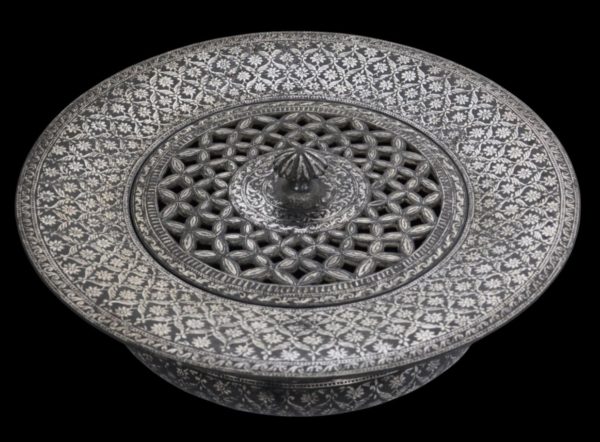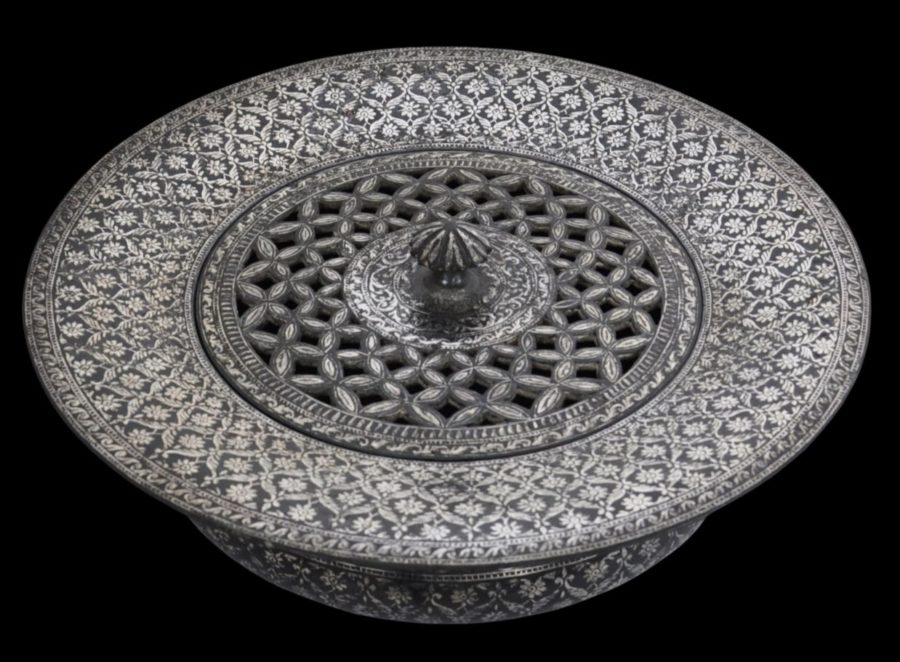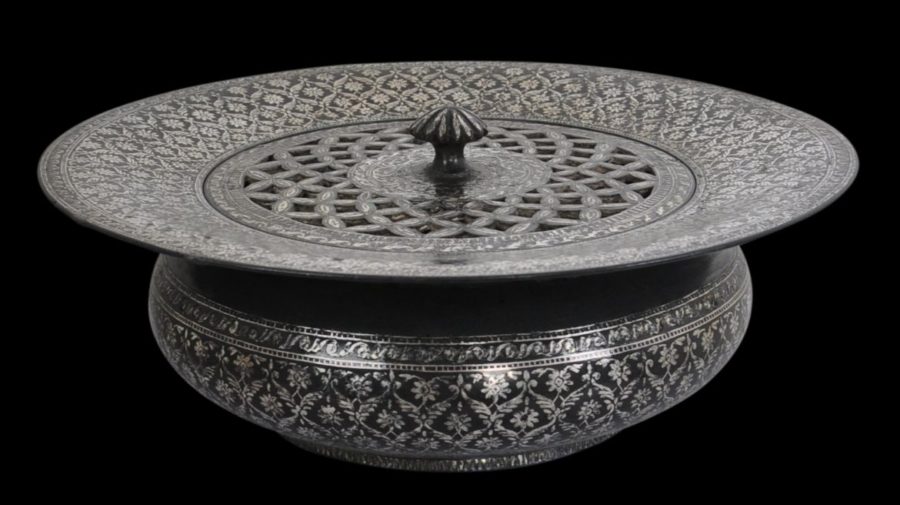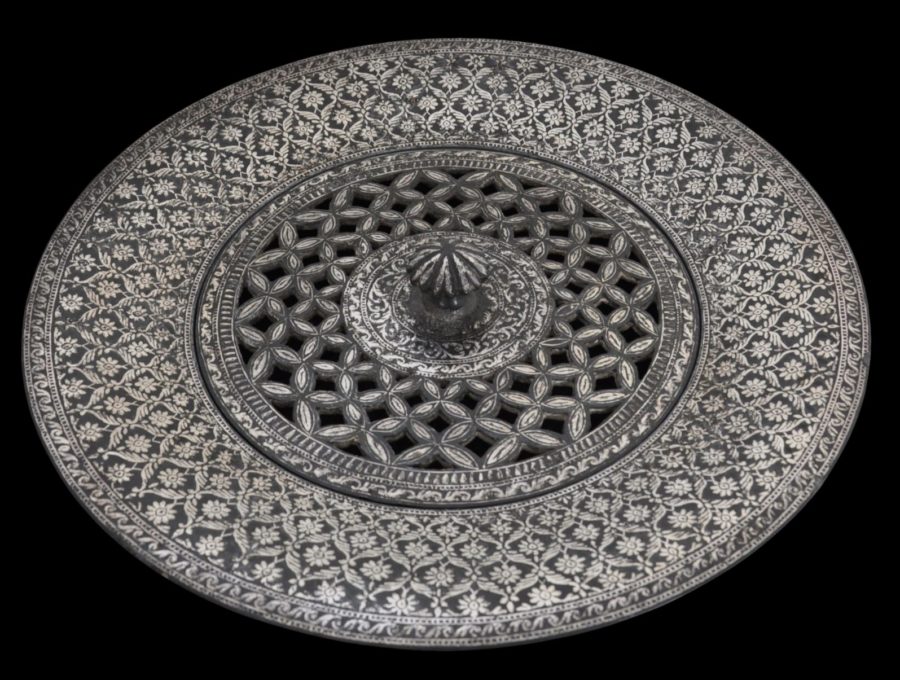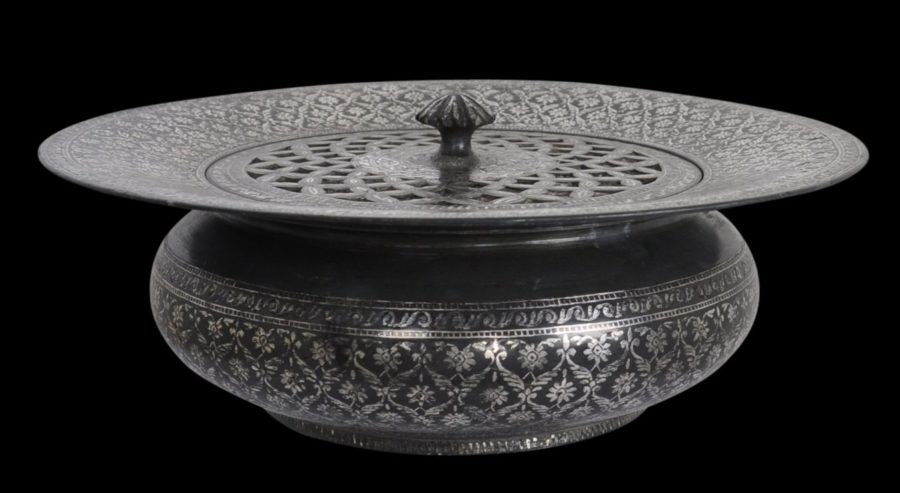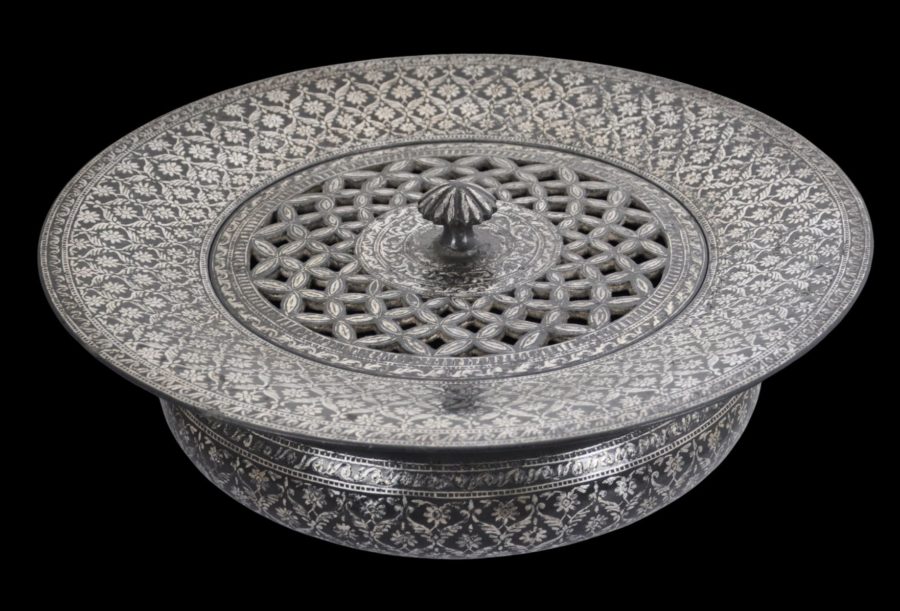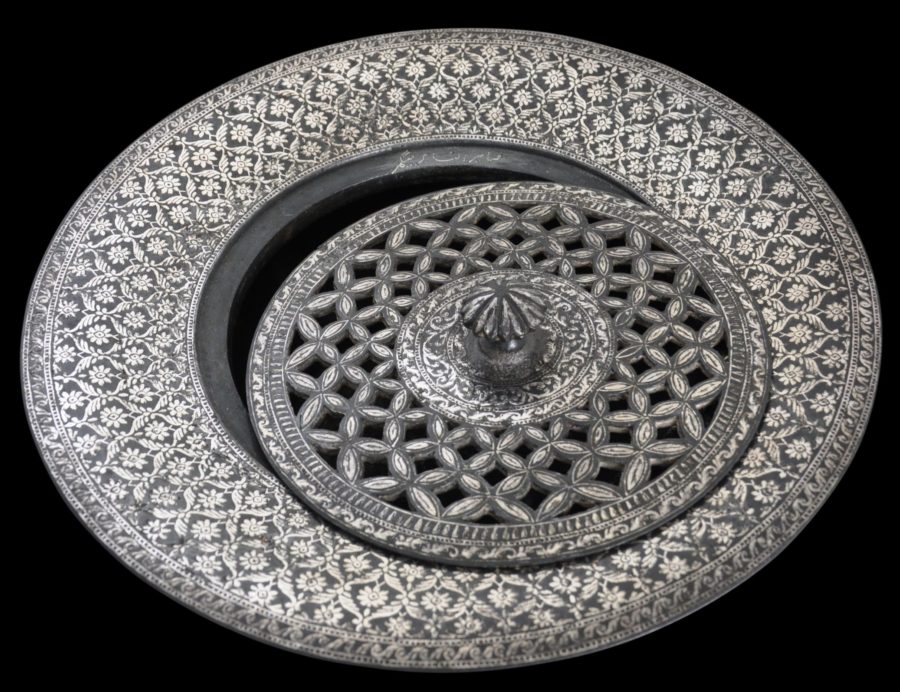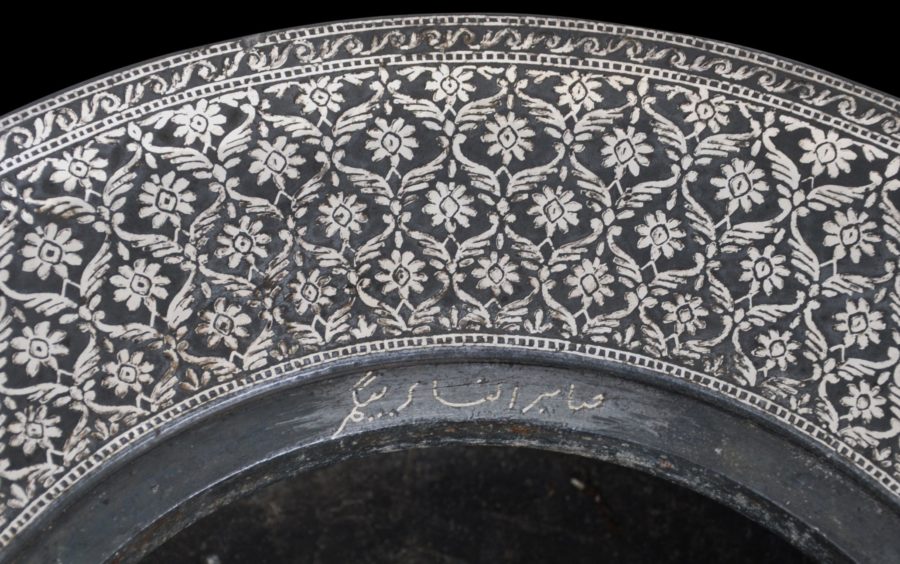This good-sized, elegantly-shaped, heavy basin has a large, hemispherical bowl; a ring foot; a wide rim; and a circular, pierced grill that sits over the well of the basin. The grill sits snugly and has a central, bud-like finial pull.
Such a basin would have been used to catch falling water as guests rinsed their hands most probably with scented rosewater on their arrival, or prior to an important meal. Such a basin was known in the Deccan as a silapchi (also spelt sailabchi).
It is decorated with silver inlay and a darkened ground known as the Bidri technique, in a style known as tehnishan work.
The sides of the base and the rim are decorated with small flowers within a trellised structure.
The pierced grill pulls out to reveal an inscription in silver inlay. This is a past owner’s name (in Farsi) and could be read as ‘Sabira Naz Begum’ – a woman’s name.
Bidriware originated in the city of Bidar in the Deccan. It is cast from an alloy of mostly zinc with copper, tin and lead. The vessels so decorated are overlaid or inlaid with silver, but also sometimes brass and gold. A paste that contains sal ammoniac is then applied which turns the alloy dark black but leaving the silver, brass or gold unaffected.
The basin here is in fine condition. Most of the silver inlay is intact, with minor losses to the foot ring and here and there about the base.
A related example comprised lot 110 at Christie’s, ‘Art of the Islamic and Indian Worlds’, London, May 2, 2019. Another example in the Victoria & Albert Museum is illustrated in Stronge (1985, p. 81). Another in the AIHB Crafts Museum, New Delhi, is illustrated in Aditi (1982, p. 136).
The example here is in fine condition. There are minor losses to the silver inlay and small solder corrections to the rim. It is sculptural and in a stable condition. Inscribed pieces of Bidriware are relatively rare.
References
Aditi, Festival of India, The Handicrafts and Handlooms Exports Corporation of India Ltd, 1982.
Lal, K., Bidri Ware: National Museum Collection, National Museum New Delhi, 1990.
Mittal, J., Bidri Ware and Damascene Work: in Jagdish & Kamla Mittal Museum of Indian Art, Jagdish & Kamla Mittal Museum or Art, 2011.
Pers. comms., Seif El Rashidi & Juan de Lara, London.
Sharma R.C. et al, Alamkara: 5000 Years of Indian Art, National Heritage Board (Singapore)/Mapin, 1994.
Stronge, S., Bidri Ware: Inlaid Metalwork from India, Victoria & Albert Museum, 1985.
Zebrowski, M., Gold, Silver & Bronze from Mughal India, Alexandria Press, 1997.


